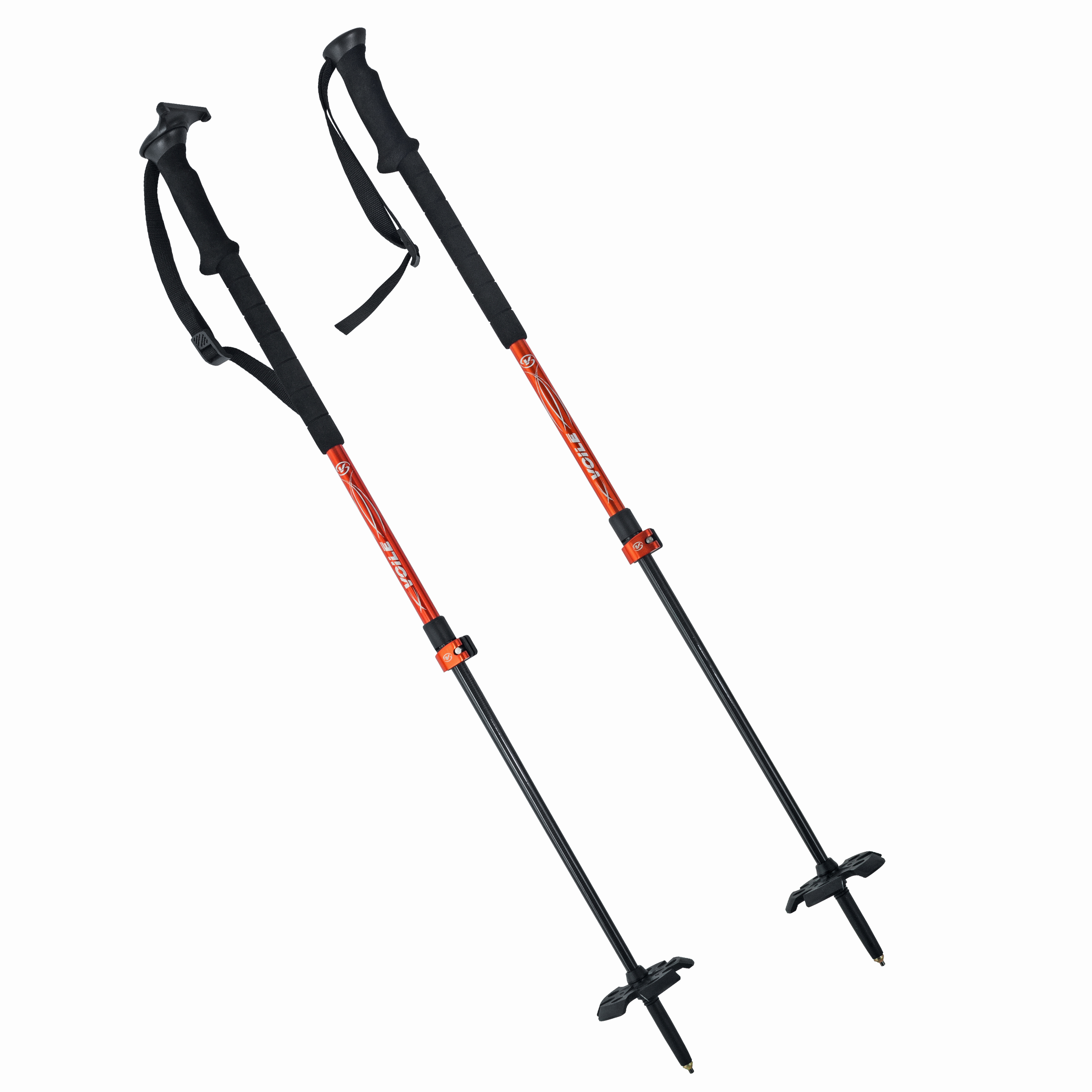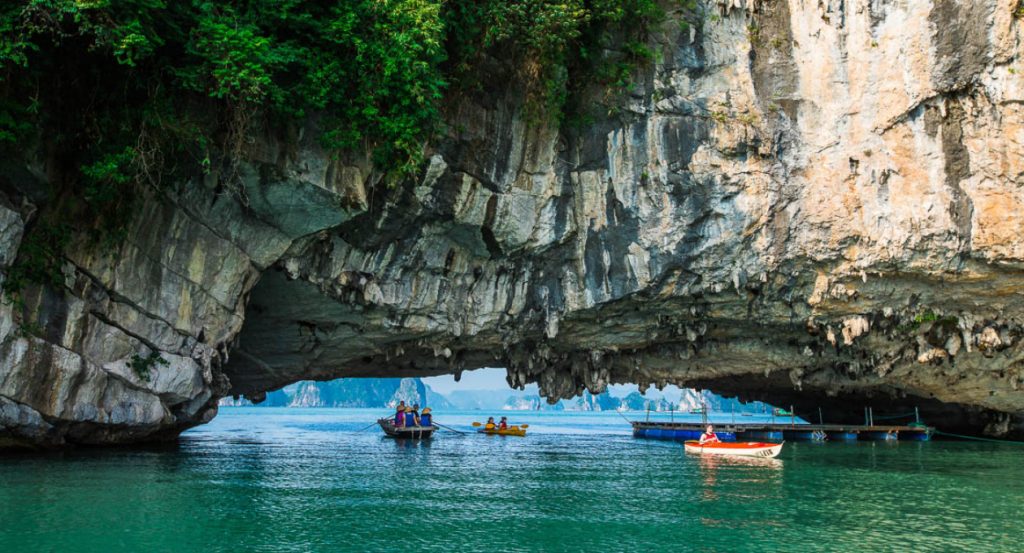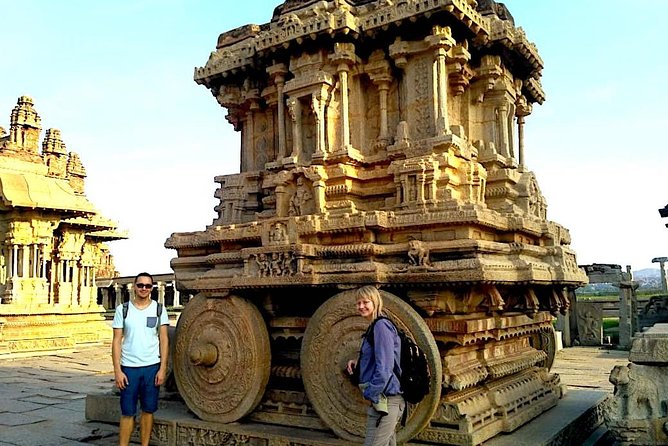Poles are essential tools with diverse uses. They come in many types and serve different purposes.
Poles can be found in various aspects of life, from outdoor activities to construction. Whether you’re hiking, skiing, or working on a building project, poles play a crucial role. They provide support, stability, and enhance performance in different tasks. Some poles are designed for sports, helping athletes maintain balance and efficiency.
Others are built for heavy-duty work, ensuring safety and precision. Understanding the different types of poles and their uses can help you choose the right one for your needs. This guide will explore various poles, their functions, and how they can benefit you in everyday activities and specialized tasks.

Credit: www.voile.com
Introduction To Poles
Poles are essential in various aspects of daily life. They support structures, enable communication, and provide light. Understanding poles helps appreciate their role in modern society. This article dives into the importance and types of poles.
Importance Of Poles
Poles play a crucial role in supporting power lines. Without them, electricity distribution would be challenging. They also hold telephone lines, making communication easier. Street lighting relies on poles to keep roads safe at night. In sports, poles are vital for activities like pole vaulting and fencing. Each function highlights their significance in our daily routines.
Types Of Poles
There are several types of poles based on their use. Utility poles support power and communication lines. They are usually made of wood, steel, or concrete. Lighting poles illuminate streets, parking lots, and sports fields. These poles can be decorative or functional. Flagpoles display national flags, company banners, or event signs. They come in various heights and materials. Lastly, structural poles support buildings, bridges, and other constructions. These poles are often made of steel or reinforced concrete.
Materials And Durability
Choosing the right materials for your poles is crucial. The durability of the poles depends on the materials used. Let’s explore the differences and benefits of various materials used in poles.
Aluminum Vs. Carbon Fiber
Aluminum poles are strong and affordable. They are heavier but can withstand rough use. Ideal for beginners or budget-conscious users. Carbon fiber poles are lighter and more expensive. They offer flexibility and strength. Perfect for serious hikers and adventurers.
Longevity And Maintenance
Aluminum poles last longer with proper care. Check for dents and bends regularly. Keep them clean and dry. Carbon fiber poles need careful handling. Inspect for cracks or splinters often. Store them safely to avoid damage.
Design And Features
Poles feature lightweight materials, ensuring easy handling and durability. Their ergonomic designs provide comfort, reducing strain during use.
### Design and Features When it comes to selecting the perfect poles, paying attention to design and features is crucial. Not only do they enhance your experience, but they also ensure your safety and comfort. Let’s delve into some of the key aspects you should consider.Adjustable Lengths
One of the most significant features to look for is adjustable lengths. Whether you’re hiking uphill or navigating a flat trail, the ability to change the length of your poles can make a huge difference. This flexibility allows you to customize the poles according to the terrain. Imagine you’re hiking on a steep incline. Shortening the poles provides better leverage, making your ascent easier. Conversely, on a downhill slope, lengthening the poles can offer extra stability. Adjustable poles are also great for travel. They can be compacted to fit into your backpack. It’s like having multiple poles in one, saving you both space and money. Have you ever tried adjusting your pole length mid-hike? It’s a game-changer. With a simple twist or click, you can alter the length to suit your immediate needs. This adaptability makes your adventure more enjoyable and less strenuous.Grip And Straps
The grip and straps are often overlooked, but they are incredibly important for comfort and control. Grips come in various materials like cork, foam, and rubber. Each has its own set of advantages. Cork grips are excellent for absorbing sweat and reducing vibration. They mold to the shape of your hand over time, providing a custom fit. Foam grips are lightweight and comfortable, especially in wet conditions. Rubber grips, while more durable, can become slippery if you sweat a lot. Straps, too, play a vital role. They help transfer some of the weight from your hands to your arms, reducing fatigue. Look for adjustable and padded straps for maximum comfort. Have you ever felt your hands cramping after a long hike? A good grip and well-fitted straps can alleviate this issue. They distribute the pressure evenly, making your hike more enjoyable. ### Takeaway Choosing the right poles is all about the details. Adjustable lengths and well-designed grips and straps can make a significant difference. What features do you prioritize in your poles? Share your thoughts and experiences below!Choosing The Right Poles
Choosing the right poles can make a big difference in your outdoor experience. The right poles provide support, balance, and comfort. They are essential for various activities and terrains. Here is a guide to help you select the best poles for your needs.
Activity-based Selection
Different activities require different types of poles. Hiking poles are great for general walking and trekking. They offer stability and reduce strain on your knees. Trekking poles are often adjustable and have comfortable grips. They are good for long-distance hiking.
If you enjoy skiing, ski poles are a must. They help with balance and turning. They are usually lightweight and have a basket at the bottom. This prevents them from sinking into the snow. For running, consider trail running poles. They are compact and lightweight. They provide extra support on uneven terrain.
Terrain Considerations
The terrain you plan to explore matters. For flat or smooth trails, lightweight poles are ideal. They offer enough support without weighing you down. Poles with simple grips and a fixed length work well here.
For rocky or uneven terrain, adjustable poles are better. They allow you to change the length as needed. This helps when going uphill or downhill. Poles with shock absorption features also help. They reduce the impact on your joints.
If you are trekking in snow, look for poles with larger baskets. They prevent the poles from sinking too deep. Some poles have interchangeable baskets for versatility. This is useful if you explore different terrains throughout the year.
Top Brands And Models
Top brands and models of poles offer high-quality options for various needs. Leading names include Black Diamond, Leki, and Komperdell. These models are known for their durability and lightweight design.
When it comes to choosing the right poles, knowing the top brands and models can make a huge difference. Whether you’re an avid hiker, a skiing enthusiast, or someone who enjoys a leisurely walk, the right poles can enhance your experience significantly. In this section, we’ll explore popular brands and best-selling models that are worth considering.Popular Brands
Several brands stand out in the market for their quality and innovation. Leki: Known for its durable and versatile poles, Leki offers a range of options for different activities. Their poles often feature advanced locking mechanisms and comfortable grips. Black Diamond: A favorite among outdoor enthusiasts, Black Diamond is renowned for its lightweight and robust poles. They are particularly popular among trekkers and mountaineers. Komperdell: This brand combines tradition with modern technology. Komperdell poles are often praised for their ergonomic design and shock absorption features. Gabel: Though not as widely known, Gabel offers high-quality poles that excel in both performance and affordability. Their adjustable poles are particularly popular among beginners.Best-selling Models
Now, let’s delve into some of the best-selling models that have received rave reviews. Leki Micro Vario Carbon: This model is a favorite for its compact design and superior strength. It features a quick-lock system that makes it easy to adjust on the go. Black Diamond Trail Ergo Cork: Offering a comfortable grip with its cork handles, this model is perfect for long hikes. The adjustable length and sturdy build make it a reliable choice. Komperdell C3 Carbon: Known for its ultra-lightweight design, this model is ideal for fast-paced activities. The triple-section design ensures it can be easily packed away when not in use. Gabel Carbon Force: This model stands out for its affordability without compromising on quality. It features a flexible tip and a comfortable grip, making it a great choice for newcomers. When choosing a pole, consider what you’ll be using it for. Are you hiking on rough terrain or skiing on smooth slopes? Each activity may require a different type of pole. Which model caught your eye? Do you have any experiences with these brands? Share your thoughts and help others make an informed choice!
Credit: www.gossamergear.com
Tips For Using Poles
Poles provide balance and support during hikes. Adjust pole height to match terrain for comfort. Hold poles firmly to avoid slipping.
Using poles can significantly enhance your hiking or trekking experience. They provide extra stability, reduce strain on your joints, and can even improve your speed. However, to reap these benefits, it’s essential to use them correctly. Here are some practical tips for using poles effectively.Proper Technique
Using the right technique is crucial for maximizing the benefits of poles. Start by adjusting the length of your poles. When holding the poles, your elbows should form a 90-degree angle. This ensures you have the right balance and support. When walking, plant your poles in sync with your opposite foot. For example, when your left foot steps forward, your right pole should touch the ground. This cross-body motion helps maintain balance and rhythm. On uphill terrain, shorten your poles slightly. It allows you to push yourself up more efficiently. Conversely, lengthen them when descending to improve stability and control.Safety Tips
Safety is paramount when using poles. Always inspect your poles before a hike. Ensure there are no cracks or damages, and that the locking mechanisms are secure. Use the wrist straps correctly. Slide your hand through the strap from the bottom and then grip the handle. This method provides better support and reduces the risk of dropping the pole. Be mindful of where you plant your poles. Avoid placing them in unstable or slippery spots. If the ground is uneven or rocky, double-check that your pole tip has a firm hold before putting your weight on it. Lastly, consider the terrain and weather conditions. Wet and muddy paths can make poles less effective. In such cases, take extra caution and adjust your technique accordingly. — Have you ever felt the difference poles can make on a steep climb? It’s a game-changer! By following these tips, you can ensure that your next adventure is both enjoyable and safe. How do you plan to use poles on your next hike?Accessories And Add-ons
Whether you’re an avid hiker, a trekking enthusiast, or just someone who enjoys the occasional walk in nature, having the right accessories and add-ons for your poles can significantly enhance your experience. It’s not just about the pole itself; the accessories can make your journey smoother and more enjoyable. Let’s dive into some essential add-ons, starting with the tips and baskets, and then moving on to storage solutions.
Pole Tips And Baskets
One of the most overlooked aspects of trekking poles are the tips and baskets. These small attachments can make a huge difference depending on the terrain you’re tackling. Are you hiking on rocky paths or snowy trails? Different tips and baskets can optimize your performance and comfort.
Pole Tips: Rubber tips are great for rocky surfaces, providing grip and reducing noise. Carbide tips are more durable and ideal for icy or hard-packed trails. Personally, I always carry both in my backpack. On a recent hike in the Swiss Alps, switching from rubber to carbide tips saved me from slipping on a particularly icy descent.
Baskets: These are the circular attachments that prevent your poles from sinking too deep into soft ground or snow. Small baskets are perfect for summer hikes on solid ground, while larger snow baskets are a must for winter treks. I once underestimated the snow depth on a spring hike and wished I had packed my snow baskets. Trust me, constantly pulling your poles out of the snow can turn an enjoyable hike into a tedious task.
Storage Solutions
Storing your poles properly can extend their life and make your adventures more convenient. Have you thought about how you’ll carry your poles when they’re not in use? Or where you’ll store them when you’re back home?
Many modern poles are collapsible or foldable, making them easy to stow away in your backpack. Look for models that come with their own storage bags. These bags often have compartments for extra tips and baskets, keeping everything organized.
At home, consider a dedicated storage solution. A simple wall-mounted rack in your garage or closet can keep your poles accessible and safe from damage. I learned this the hard way after my trekking poles got bent from being haphazardly thrown in the trunk of my car.
How do you store your poles? Do you have any tips or tricks for keeping them in top condition? Share your thoughts in the comments below. And remember, the right accessories can turn a good hike into a great one!
Customer Reviews And Testimonials
Customers love our poles for their durability and ease of use. Testimonials highlight the lightweight design and sturdy construction. Users appreciate the comfortable grip and reliable performance in various terrains.
Customer Reviews and Testimonials When deciding on a product, nothing beats hearing from real customers. Reviews and testimonials about Poles offer valuable insights. They provide a glimpse into user experiences and expert opinions. Let’s dive into some real feedback that can help you make an informed choice.User Experiences
Poles have become essential for many outdoor enthusiasts. Sarah, a regular hiker, shared her experience: “Using these poles transformed my hiking trips. They provided stability on rough terrains and reduced the strain on my knees. I couldn’t believe the difference they made.” Many users echo Sarah’s sentiments. They appreciate the ergonomic design and durability. One user noted how the adjustable length made the poles versatile for different hikes. Another mentioned how lightweight they are, making them easy to carry. Have you ever wondered how much a simple piece of gear can improve your outdoor adventures? User reviews often highlight unexpected benefits. People have found that Poles not only enhance their hiking experience but also improve posture and balance.Expert Opinions
Experts in the field also have positive things to say about Poles. Outdoor gear specialists often recommend them for their quality and performance. Dr. John, a physical therapist, mentioned, “Poles are beneficial for reducing joint impact. They are especially useful for people with knee or hip issues.” Professional hikers and trainers emphasize the importance of using the right gear. According to Maria, a hiking coach, “Properly using Poles can prevent injuries and make long hikes more enjoyable. They help distribute weight evenly, reducing fatigue.” These expert insights reinforce what many users have experienced. The combination of user reviews and expert opinions can give you confidence in your decision. Are you ready to enhance your outdoor activities with Poles? The feedback from both users and experts is overwhelmingly positive, making Poles a worthy addition to your gear. — Feel free to use the reviews and opinions shared above as a guide. Whether you’re a seasoned hiker or just starting, Poles can make a significant difference. What’s your experience with using Poles? Share your thoughts and join the conversation!
Credit: mountainsmith.com
Frequently Asked Questions
What Is The Meaning Of Poles?
Poles refer to the two opposite ends of a magnet or the Earth’s axis, known as the North and South Poles.
What Is Known As Poles?
Poles are the two opposite ends of Earth’s axis, known as the North Pole and the South Pole. They are the points where Earth’s rotational axis intersects its surface. These regions experience extreme climatic conditions and unique daylight patterns.
Is It The Poles Or The Polish?
The correct term is “the Polish” when referring to people from Poland. “Poles” can also be used but isn’t as common.
What Does Being Pole Mean?
Being pole means being at the forefront or leading position. It often refers to the lead position in a race.
Conclusion
Poles are essential tools with varied uses. They support structures and activities. From hiking to construction, poles provide stability. Choosing the right pole enhances safety and efficiency. Always consider material, length, and purpose. Durable poles offer long-term benefits. Enjoy exploring and working with reliable poles.
{ “@context”: “https://schema.org”, “@type”: “FAQPage”, “mainEntity”: [ { “@type”: “Question”, “name”: “What is the meaning of poles?”, “acceptedAnswer”: { “@type”: “Answer”, “text”: “Poles refer to the two opposite ends of a magnet or the Earth’s axis, known as the North and South Poles.” } } , { “@type”: “Question”, “name”: “What is known as poles?”, “acceptedAnswer”: { “@type”: “Answer”, “text”: “Poles are the two opposite ends of Earth’s axis, known as the North Pole and the South Pole. They are the points where Earth’s rotational axis intersects its surface. These regions experience extreme climatic conditions and unique daylight patterns.” } } , { “@type”: “Question”, “name”: “Is it the poles or the Polish?”, “acceptedAnswer”: { “@type”: “Answer”, “text”: “The correct term is \”the Polish\” when referring to people from Poland. \”Poles\” can also be used but isn’t as common.” } } , { “@type”: “Question”, “name”: “What does being pole mean?”, “acceptedAnswer”: { “@type”: “Answer”, “text”: “Being pole means being at the forefront or leading position. It often refers to the lead position in a race.” } } ] }




